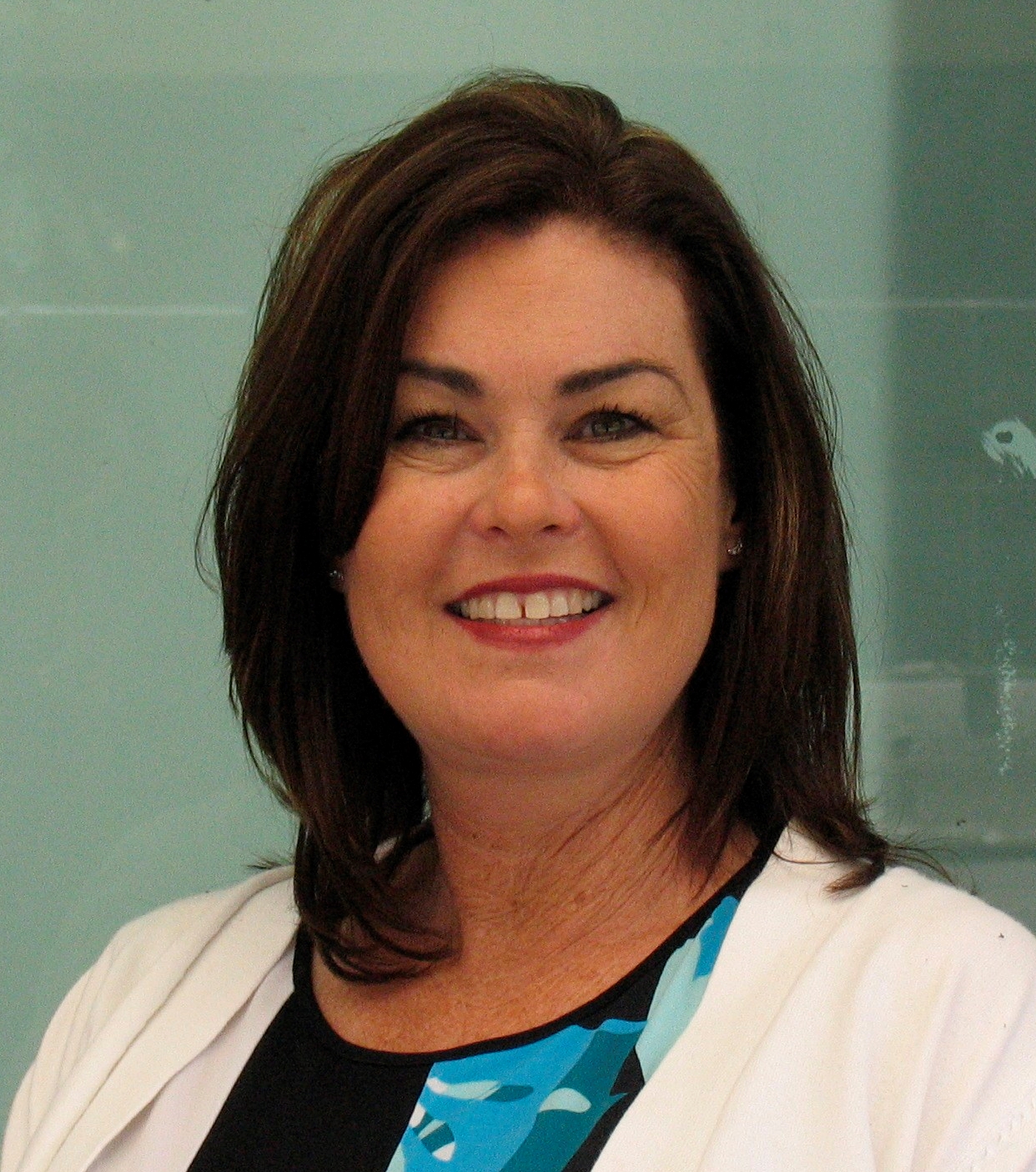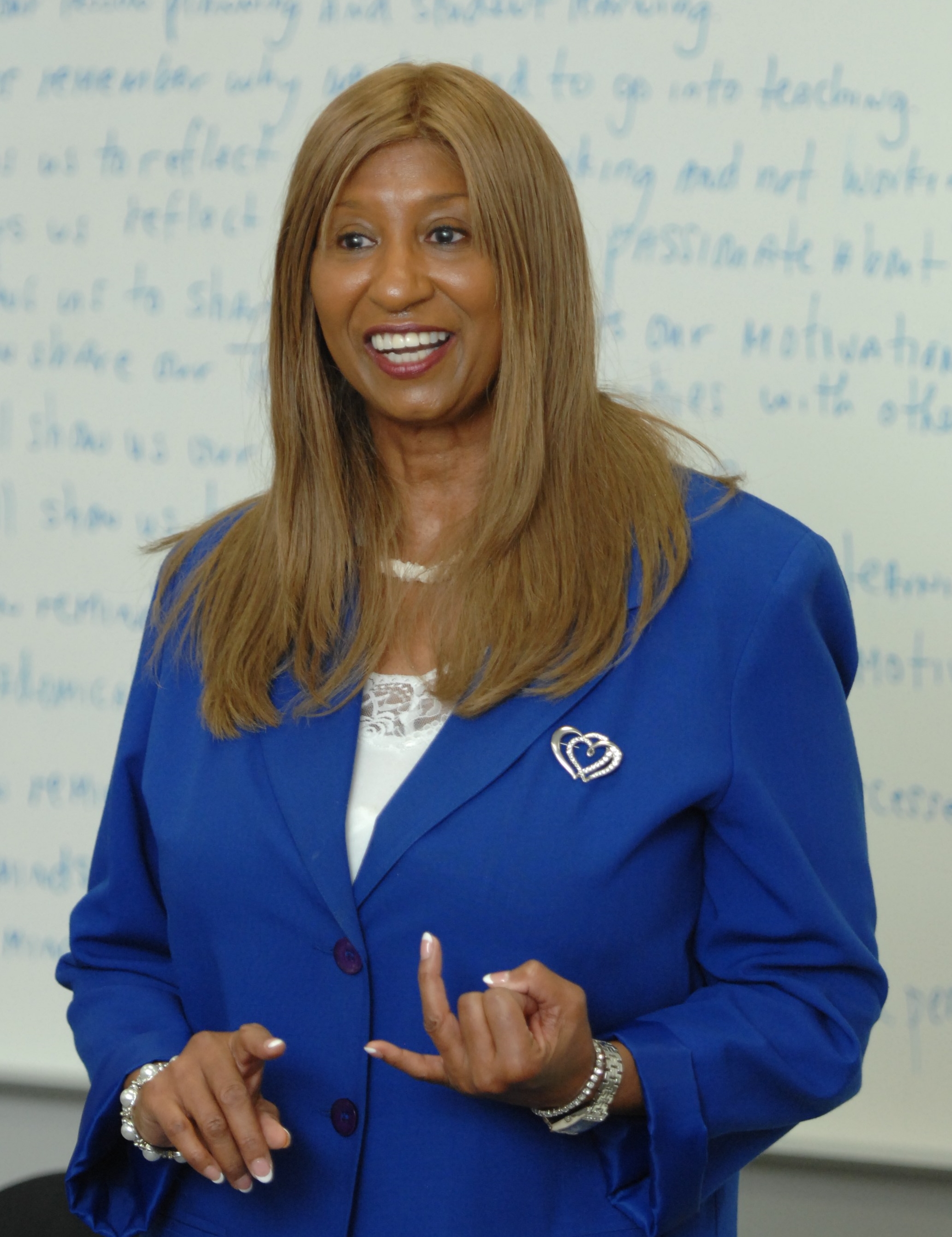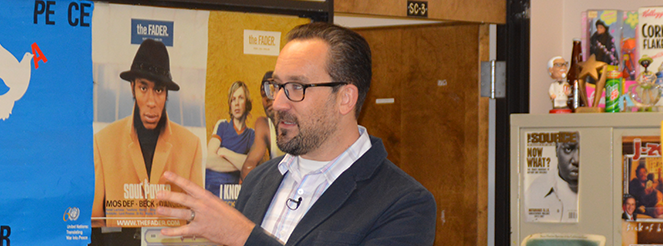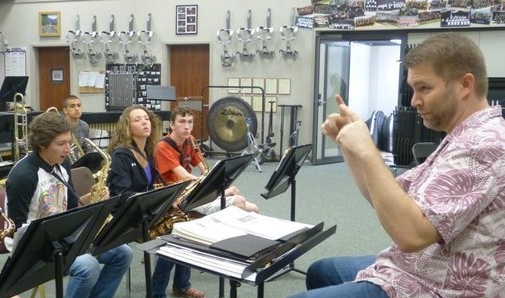Kindergarten teacher Michelle Cherland, a 2016 California Teacher of the Year, remembers corralling a runaway kindergartner who wanted to go see his mother. When she patiently explained to him he would see his mom once school was over in three hours, the 5-year-old informed her, “I don’t like the way you are running things, and I need to speak with your manager!”

Michelle Cherland
Upon learning from Cherland that her manager was none other than the principal, the tot just looked at her, steely-eyed, and said, “I’ll wait.”
Cherland might have been laughing inside at the student’s antics, but she resolved the issue through respect and redirection. When it comes to classroom management, the U.S. Army Reserve captain has learned that the same practices she brought to her soldiers work in the classroom as well. Aside from keeping her students (and her soldiers) 100 percent engaged, the Desert Sands Teachers Association member says, it’s all about respect.
“They don’t just need to respect me,” she says. “I need to respect them. It’s me learning how to respect kids from so many different areas and backgrounds. If they don’t feel respected, you are at a loss from the beginning.”
In fact, in interviews with successful teachers and education experts, respect and relationships both emerged as modern keys to classroom management, which is no longer an entirely separate aspect of teaching.
“Classroom management used to be about keeping control and keeping kids in line,” says Mark Acker, president of the Palm Springs Teachers Association (PSTA), which offers trainings in classroom management to its members. “Now the big takeaway is relationships. The message coming through in classroom management practices is that we need to be partners in this for the kids. Once you do that, the rest falls into place.”
Teacher training
Association-led trainings have been especially well received in Palm Springs, where there is always an influx of new teachers from out of state. About 100 teachers attend two PSTA sessions offered in the fall, according to Acker. Such trainings offer classroom management techniques, and also engage members and show value, he says. Along with breakfast, T-shirts and a chance to win an iPad with the session, “the main thing is that we are offering them something they need and they see
a value in their membership.”
Other local chapters have incorporated classroom management into their own professional development trainings. CTA provides trainings as well through its annual Good Teaching Conferences in Northern and Southern California.
Schools of education, which are producing newly minted teachers, have also made changes and incorporated learning-centered classroom management into the curriculum.
“It’s a bit of a new approach,” says Fred Nelson, professor of science education in the Department of Curriculum and Instruction at CSU Fresno and a California Faculty Association (CFA) member. “If I’m redirecting a student, it’s toward learning and not [addressing bad] behavior. There are still routines and rituals in the classroom, but it’s important to think of students as individuals.”
Nelson urges his teachers to be reflective and to go back to their lesson plans and explain their thinking processes when things appear to go awry.
“Doing that can often help novice teachers,” he says. “Really, it’s all about engagement. It can’t be a teacher-centered classroom. We are instead taking a learning-centered approach.”
What’s working
- Nelson is a frequent visitor to local classrooms and has observed that when there is a disruptive student, it is often a function of class size. “I’ve been in classes that approach 40 students. A lot of behavior issues just go away when class sizes are reasonable,” he says.
- Restorative justice is another approach to behavior in today’s classrooms, Nelson says. Recognizing that zero-tolerance policies result in a disproportionately higher rate of suspensions among students of color, school districts are now implementing restorative justice programs, where conflicts are addressed through small-group discussions rather than removal of students from the class. “That is an emphasis we are trying to take in teacher training. It is much better suited for today’s multicultural classroom,” Nelson says.
- Some schools are also teaching mindfulness meditation practices to help create a more positive classroom environment.
- The new state standards, which emphasize cross-curricular collaboration and critical thinking, are especially suited to a new classroom management style centered around engagement. Nelson points out that novice teachers may have an advantage in this over veterans, who have already gone through many pendulum swings in education.
Culturally responsive

Erma Jean Sims
Nevertheless, teachers and those in teacher education acknowledge not every student is going to be enthusiastic and engaged.
“There are students with high needs who may be oppositional, attention-seeking or socially inept,” says Erma Jean Sims, a lecturer in the School of Education at Sonoma State University and chair of the CFA Teacher Education Caucus. “What we’re finding is that what drives first-year teachers to leave the profession is that feeling they can’t get their hands and heads around how to handle disruptive students.”
“There’s often a cultural mismatch between teachers and students. Teachers have a responsibility to become familiar with factors that go into a child’s culture.”
—Erma Jean Sims, chair, CFA Teacher Education Caucus
In today’s multicultural classrooms, the need is greater than ever for teachers to be culturally competent and aware of the needs of a culturally and linguistically diverse student population.
Sims notes that more is being written about Culturally Responsive Classroom Management. In this approach, teachers recognize their biases and values and reflect on how these influence their expectations for behavior and interactions with students as well as what learning looks like.
“There’s often a cultural mismatch between teachers and students,” she says. “Teachers have a responsibility to become familiar with factors that go into a child’s culture.”
Sims agrees that new teachers have a variety of demands and challenges when they start their career, and classroom management is often the most pressing. She recommends that new teachers find a mentor in their department or create a cohort with other new teachers where they can discuss and develop strategies for better classroom management. “We know that you can’t teach if there is chaos,” she says.
Although many veteran teachers will say that classroom management “kicks in” with experience, some beg to differ.
Relevance, discipline

UTLA member Daniel Jocz,a high school social studies teacher and 2016 California Teacher of the Year, says classroom management comes down to instructional strategies and a well-prepared curriculum relevant to students.
Daniel Jocz, a high school social studies teacher and 2016 California Teacher of the Year, has a different view. For the United Teachers Los Angeles member, it comes down to a variety of instructional strategies and a well-prepared curriculum that’s relevant to students.
“If students find relevance in their work, classroom management takes care of itself.” —Daniel Jocz, 2016 California Teacher of the Year
Still, Jocz is challenged by students who seem apathetic or reluctant to speak out in class. “The struggle I have is, how do I manage those who are shy or disengaged? Some of them have so many walls they’ve built up,” he says.
Jocz says he tries to engage those students by continuing to introduce a variety of techniques like small groups, or research/ inquiry process, as well as by realizing that some students will develop their social skills a bit later.
To his colleagues, 19-year veteran high school instrumental music teacher Mitch Bahr might seem to have it easy when it comes to classroom management. After all, students aspire to be part of the two concert bands, orchestra, jazz ensembles and drumline that he directs at Foothill High School in Palo Cedro. Bahr says it’s anything but easy.

Mitch Bahr leads a class at Foothill High School in Palo Cedro. “The best fun is when discipline pushes us to a level kids didn’t know they could reach,” he says.
“I would say that classroom management is everything,” says the Shasta Secondary Employees Association member, who is also a 2016 California Teacher of the Year. “If I don’t get them to respect the podium and the baton, I am just a guy standing on a wooden box waving a stick.”
Bahr readily admits his classes can sound like complete chaos to outside visitors, but when he stands up on the podium, students demonstrate discipline by quieting down and being prepared to make music.
“The best fun is when discipline pushes us to a level kids didn’t know they could reach,” Bahr says. “Music classes add a layer of character and discipline few who are outside ever see.” Perhaps in the near future, the same will be said about current trends in classroom management.
Culturally Responsive Classroom Management
Educators who teach through the lens of CRCM have a greater understanding of cultures and accompanying behavior patterns reflected in diverse student populations. They recognize that because of students’ different backgrounds, behavior and best ways of learning vary widely, and take them into account when teaching.
Culturally responsive teaching, says Zaretta Hammond,author of Culturally Responsive Teaching and the Brain, leverages the brain’s memory systems and information processing structures. Hammond explains that many diverse students come from oral cultural traditions, including African American, Latino, Southeast Asian, and Pacific Islander communities. These cultural groups use memory strategies to make learning sticky, such as connecting what needs to be remembered to rhythm or music or by reciting it in fun ways like a poem or riddle.
In assisting a sixth-grade science educator who was experiencing difficulty teaching vocabulary to students, Hammond suggested three tips:
Gamify it. Most games employ a lot of the cultural tools you’d find in oral traditions: repetition, solving a puzzle, making connections between things that don’t seem to be related.
Make it social. Organizing learning so that students rely on one another and engage in good-natured competition builds on diverse students’ communal orientation.
Storify it. Diverse students (and all students) learn content more effectively if they can create a coherent narrative about the topic or process presented.
Source: Cult of Pedagogy
A few other CRCM techniques:
Monitor your discourse style. Indirect requests can confuse some students who are used to receiving explicit directives.
Be sensitive to how diverse cultures deal with conflict. While some cultures settle differences openly, others resolve conflict quietly, away from others or through written communication.
Emphasize a positive environment, not punishment.
Source: Edutopia
This story originally appeared in the August 2016 issue of the Educator.